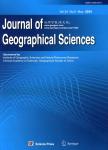Land use and landscape pattern change: a linkage to the construction of the Qinghai-Xizang Highway
Land use and landscape pattern change: a linkage to the construction of the Qinghai-Xizang Highway作者机构:Inst. of Geographic Sciences and Natural Resources Research CAS Beijing China College of Resources andEnvironment Southwest Agricultural University Chongqing China The Ministry of Science and Technology Beijing China
出 版 物:《Journal of Geographical Sciences》 (地理学报(英文版))
年 卷 期:2002年第12卷第3期
页 面:253-265页
核心收录:
学科分类:08[工学] 09[农学] 0903[农学-农业资源与环境] 083306[工学-城乡规划管理] 0833[工学-城乡规划学]
基 金:The National Key Basic Research Special Fund, No.Gl 998040800 The Core Project of Institute of Geographic Sciences and Natural Resources Research of CAS for Knowledge Innovation, No. CXIOG-E01-01,No.CXIOG-A00-03-02
主 题:land use change comprehensive index of the degree of land use diagnostic index of landscape degree of dynamic land use Qinghai-Xizang Highway
摘 要:Based on digital land use data from 1995 to 2000 and road data, the land use and landscape changes of Golmud, Qumaleb and Zhidoi are studied on a macro-scale. Land use and landscape changes in highway buffer zones and city expansion are special subjects. A new formula is used to define the exact degree of dynamic land use. To adequately define land use and landscape pattern changes, the buffer zones, illustrating the changes at different distances from the road, are recognized with ArcGIS 8.1 software. Prominent changes took place in land use and landscape patterns from 1995 to 2000, and the area of built-up land increased by 323.8%. The comprehensive degree of dynamic land use is 2.25, and the degree of dynamic land use of built-up land is the highest, followed by cultivated land. Woodland has the lowest value. The used degree index of land resources declined by 38.8 from 1995 to 2000. Landscape changed dramatically which influenced ecological processes immensely. Different from the corridor effect of other traffic routes, the corridor effect of this section of road is not obvious and its “point radiation effect can be easily seen. The expanding range of Golmud City is confined to a 3 km buffer, while for Wudaoliang, it is 1 km. No land use change happened in the Nanshankou buffer.



